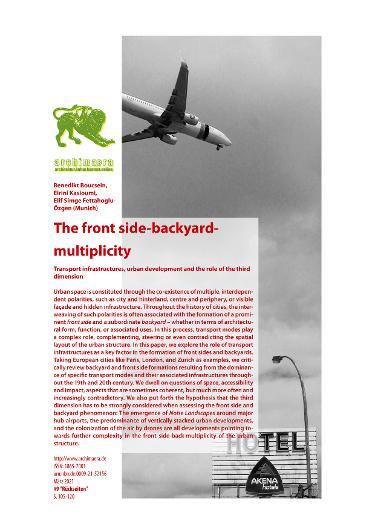The front side-backyard-multiplicity
DOI:
https://doi.org/10.60857/archimaera.9.105-20Schlagworte:
Transport Hubs, Infrastructure, Polarity, Development, Impact Zones, Polarisation, Accessibility, Urban Space, Transport ModesAbstract
Urban space is constituted through the co-existence of multiple, interdependent polarities, such as city and hinterland, centre and periphery, or visible façade and hidden infrastructure. Throughout the history of cities, the interweaving of such polarities is often associated with the formation of a prominent front side and a subordinate backyard – whether in terms of architectural form, function, or associated uses. In this process, transport modes play a complex role, complementing, steering or even contradicting the spatial layout of the urban structure. In this paper, we explore the role of transport infrastructures as a key factor in the formation of front sides and backyards. Taking European cities like Paris, London, and Zurich as examples, we critically review backyard and front side formations resulting from the dominance of specific transport modes and their associated infrastructures through-out the 19th and 20th century. We dwell on questions of space, accessibility and impact, aspects that are sometimes coherent, but much more often and increasingly contradictory. We also put forth the hypothesis that the third dimension has to be strongly considered when assessing the front side and backyard phenomenon: The emergence of Noise Landscapes around major hub airports, the predominance of vertically stacked urban developments, and the colonization of the air by drones are all developments pointing towards further complexity in the front side-back-multiplicity of the urban structure.
Downloads
Veröffentlicht
2021-03-16
Ausgabe
Rubrik
Artikel

